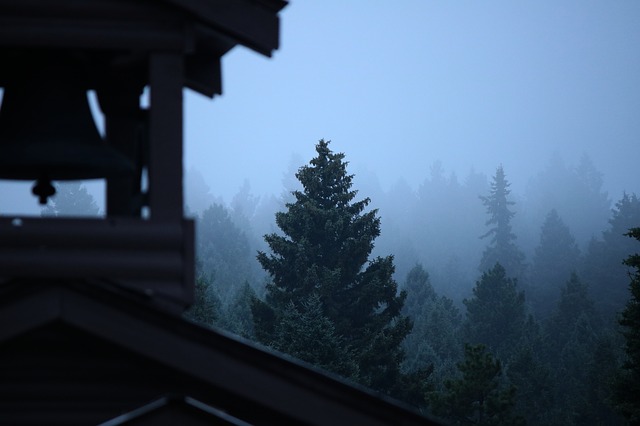Through the Window - Part 2: The Open Portal and the Call to Prayer
Rebecca Spears

Read Part I
- Great trees, outspreading and upright, apostles of the living light.
Patient as stars they build in air tier after tier a timbered choir . . . —Wendell Berry, “The Timbered Choir”
Writers and artists often use windows as a source of inspiration. Georgia O’Keeffe has a series of brilliant paintings that offer unique views of New York City from her perch in the Shelton building, where she lived with Alfred Stieglitz for twelve years in the 1920s and 1930s.
While a window can visually frame a scene, it can also frame sounds, letting us hear them in ways we hadn’t heard before. Wendell Berry’s window poems are a result of his placing a writing desk in front of a huge forty-paned window. For him, the great trees not only inspired him visually in their “weightless grace,” but also for their song, which left “a blessing on this place.”
On Easter morning two years ago, the bells of St. Sebastian’s Church in Salzburg rang and rang at sunrise, startling me from sleep. Briskly stirred to consciousness, I checked my watch. It was only six a.m. when an entire chorus of bells called me to the open casement window of my room at the Hotel Amadeus. All over the city, bells pealed from many churches, some tolling a loud bass, others chiming the middle tones, and some reaching the high, clear notes, closer to a soprano voice. What sounded like discord at first, soon shaped itself into celebratory clanging.
In the sprawling metropolis that I call home, I don’t ever recall hearing so many bells at once. My place in the Houston Heights is near a small Episcopal chapel, and occasionally, I will hear its bells on a Sunday morning, if I’m outdoors. Because Houston is the most air-conditioned city in the country, we keep our windows closed for many months of the year. I suspect that while I’m in my home, I miss a lot of curious sounds because of the air-conditioning—snippets of conversations from people walking by, sirens, soft rains, barking dogs, freeway traffic.
The call to celebrate Easter two years ago in Salzburg is one I won’t soon forget; it was entirely extraordinary. While Salzburgers are accustomed to hearing the bells all year long, at six a.m., noon, and six p.m., I was a visitor brought to the open windows, portals that animated me and gladdened my heart. The call to prayer felt like something that I had been missing all my life. I can still summon the bells in my imagination, and they still hearten me.
